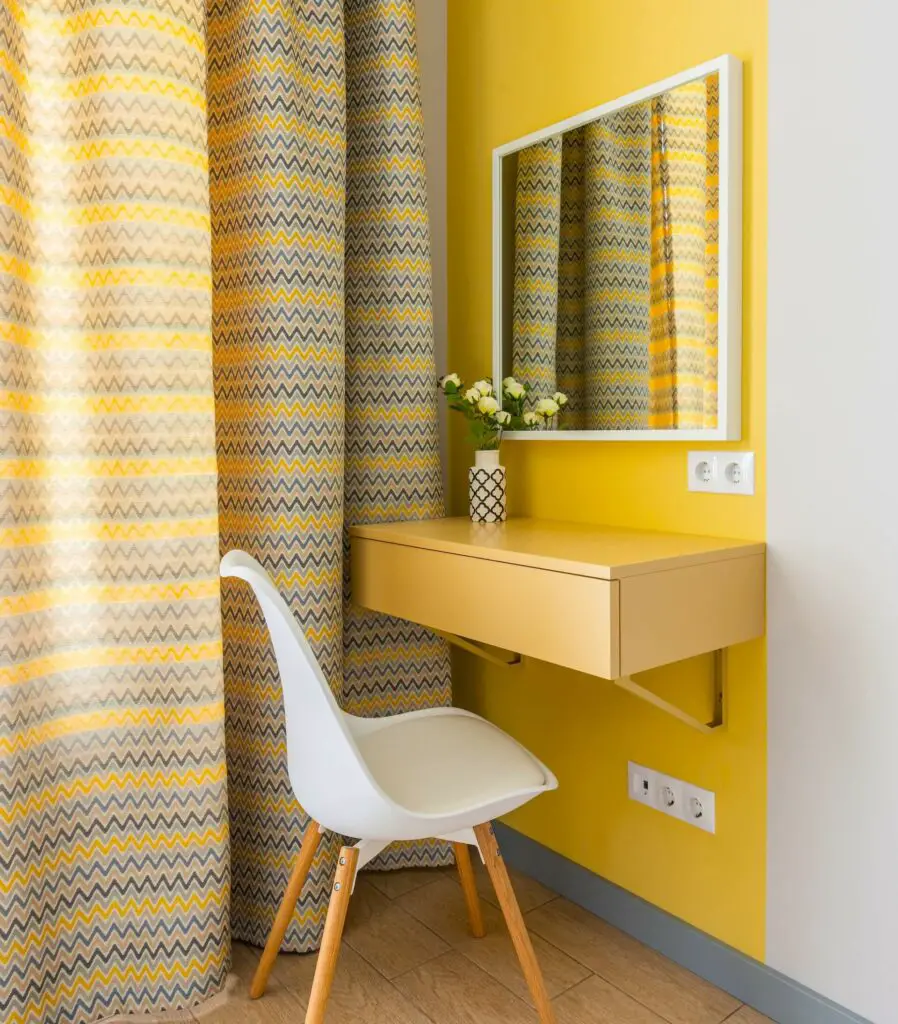What’s the point of spending hours choosing the perfect paint color if you can’t see it properly? Well, fear no more! In this guide, I will explain exactly why the color rendering index (CRI) is so important and what you can do to make sure that your LEDs enhance the colors of your home.

The best CRI for LEDs is 90 and above. From 90 to 100, the changes are so subtle that they are hardly perceivable by the human eye. A CRI of 80-90 is considered very good but the higher the better. Color temperature and brightness do not directly affect the CRI, so the other specs of the bulb should not influence your purchasing decision.
In this article, we will see:
- What CRI is and how it affects our perception of color
- How it is determined and affected by other metrics
- Why it is important to know the CRI values of our bulbs
- When we should use high or low CRI values
Understanding The Basics Of The Color Rendering Index
What is CRI?
To start from the beginning, the CRI measures how accurately a light source renders the colors of objects compared to a natural light source on a scale from 0 to 100.
Higher CRI values mean truer and more vibrant colors. Or in other words, our perception of the colors under high-CRI lighting approaches the actual color as best as possible.



On the other hand, low CRI values can make colors look dull or washed out.
Now this might not seem too important at first but in reality, it plays a big role in creating a visually appealing environment in your home. It truly helps us achieve a pleasant lighting experience and make sure that all our furniture and wall colors do not lose their spark.
How is CRI determined?
The process is quite straightforward. Some color samples are illuminated with both the light source being tested and a reference light source of the same color temperature.
Then the samples are compared to a standard set of colors and rated on a scale from 0 to 100, based on how closely they match the colors under the reference light source. The average score across all colors is the CRI value.
What does it depend on?
The CRI value of a light source depends on its spectral output and the observer’s color vision. The standard method for measuring CRI, developed by the International Commission on Illumination (CIE), uses a set of eight pastel colors and is referred to as CIE Ra.
However, some manufacturers may use other color samples or different methods to measure CRI. This can result in different CRI values for the same light source.
Although color temperature and brightness do not affect the actual CRI value of the light source, they can influence the ideal CRI value.
For example, warmer color temperatures, such as 2700 K, may benefit from higher CRI values to enhance the warmth and richness of the colors, while cooler color temperatures, such as 4000 K, may benefit from slightly lower CRI values to create a more modern and clean look.
Why is CRI so relevant now?
Although the CRI is relevant for all light bulb types, it’s becoming a more discussed metric with the phase-out of incandescent bulbs.
That’s because incandescent and halogen bulbs, which produce light via heat, already have a high CRI and so this was never a big problem. However, the way in which CFLs and LEDs produce light can lead to both high and low CRI values.
As LEDs are becoming more popular, it is important to know their CRI capabilities.


Factors To Consider When Choosing The Best CRI For LED Lighting
Environment and applications
The ideal CRI for LED lighting varies slightly depending on the specific requirements of the space.
For example, activity rooms and spaces that entertain guests definitely benefit from high-CRI lighting. In these spaces, we want to ensure that colors appear vibrant and lifelike and enhance the overall aesthetic and mood of the space.
Consider these as the spaces where you may want to highlight interior design elements, showcase your furniture and wall art, and in general create a visually appealing and dramatic environment.
On the other hand, rooms that are more private and less “noisy” may benefit from lower CRI values, which sometimes create a relaxing and comfortable atmosphere.
For example, the bedroom, utility room, storage room, cellar (if you’re lucky enough to have one!), or container spaces do not necessarily need high CRI values.
Preferences
Make sure to consider the specific needs and goals for the space, as well as your own preferences. Some people might prefer high CRI in a walk-in closet to see the colors of their clothes as clearly as possible, while others might not have such a preference.
Best Practices For Achieving Optimal Color Rendering With LED Lighting
Tips for selecting the right CRI
- Consider the specific requirements of the space: As we saw already, different types of spaces have different CRI needs. Consider the function of the space, the colors of the objects, and the overall aesthetic of the design.
- Look for high-CRI options: In general, higher CRI values are better for achieving accurate color rendering. Look for LED lighting with a CRI of 90 or higher for the best results. I would advise not going below a CRI value of 85.
- Choose the right color temperature: Although not directly related, color temperature can influence the ideal CRI value. Select LED lighting with a low color temperature and high CRI for traditional and transitional designs or high color temperature and slightly lower CRI for contemporary and Scandinavian styles.
- Consider dimming capabilities: Dimming capabilities can be useful for adjusting the light levels and achieving the desired atmosphere. Make sure the LEDs you choose are compatible with dimmer switches and can be adjusted to the appropriate light levels. This will give you versatility over the unchangeable CRI.
- Consult with lighting experts: If you are unsure about the best CRI for your space, consider consulting with lighting experts. They can help you select the right LED lighting for your needs and provide guidance on installation and maintenance.
What are some common mistakes to avoid when choosing CRI?
- Assuming all high-CRI lighting is the same: Not all high-CRI lighting is created equal. Different manufacturers may use different methods to achieve high CRI values, and the resulting light quality can vary.
- Overlooking color temperature: While CRI is important for accurate color rendering, color temperature can also influence the overall color appearance. Make sure to consider the color temperature of the lighting when selecting LED lighting with the right CRI.
- Ignoring the illuminated objects: Think carefully about what you are lighting and for what purpose. Colorful furniture and wall decor need high CRI values. Your kitchen cupboards and laundry room most likely don’t.
- Focusing only on aesthetics: While aesthetics are important, you should also consider the function and purpose of the space.
Wrapping up
So this is why it’s important to understand the way CRI affects our perception of color. The growing popularity of LED lighting adds one extra layer of specifications that we need to look out for.
Keep in mind the tips we discussed on when to use low- or high-CRI bulbs and you’re good to go!
Frequently Asked Questions (FAQs)
What is the difference between CRI and CCT?
The color rendering index (CRI), measures how accurately a light source reveals colors, while the correlated color temperature (CCT), measures the appearance of the light color, with warmer tones having a lower value and cooler tones having a higher value.
Can a high CRI value compensate for poor lighting design?
No. Lighting design involves much more than just selecting the right CRI value. Design means adjusting the placement and direction of lighting fixtures, color temperature, brightness, and other parameters to the overall design of the space. Poor lighting design leads to spaces appearing uninviting. With a well-designed lighting scheme that takes all these factors into account, lower CRI values may be acceptable if they still achieve the desired aesthetic and functional goals.
How does CRI impact the energy efficiency of LED lighting?
Well, higher CRI values require more complex phosphor blends to be used in the LED chips, which can reduce the overall efficiency. However, this is a tiny difference that wouldn’t actually lead to observable and measurable effects on energy consumption.
How do you know if an LED light source has a high CRI value?
The best way to figure out the CRI value of a bulb is to check the product specifications and R values if available. Another option is to look for third-party certifications such as those by Energy Star or DesignLights Consortium (DLC). These certifications ensure that the bulb meets specific quality standards and has high CRI values.
Which bulb has the highest CRI?
The color rendering index of incandescent bulbs is very high, reaching up to 100. However, they are not exactly ideal for color rendering because their low color temperature (around 2700 K) makes it hard to distinguish between various shades of blue.


